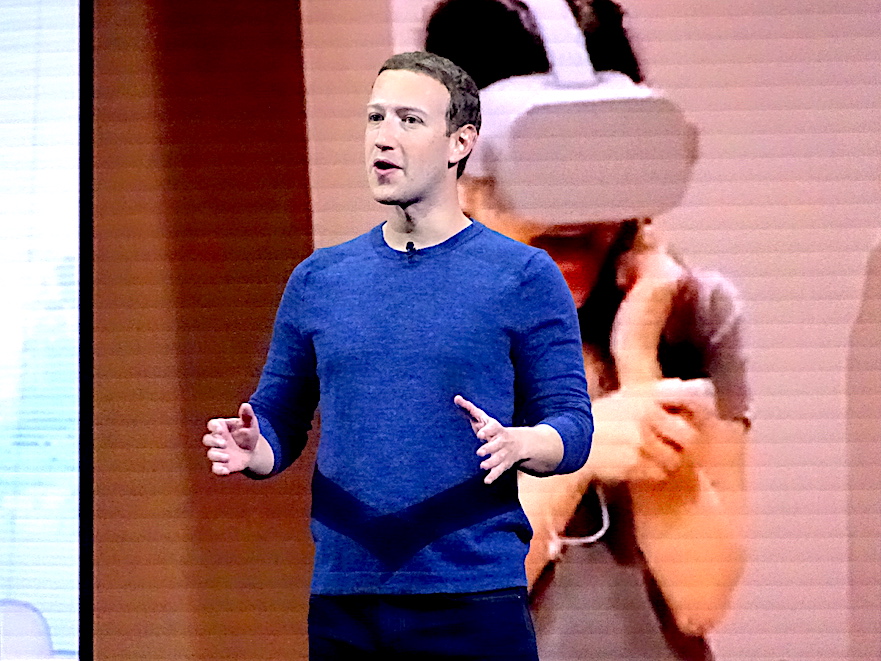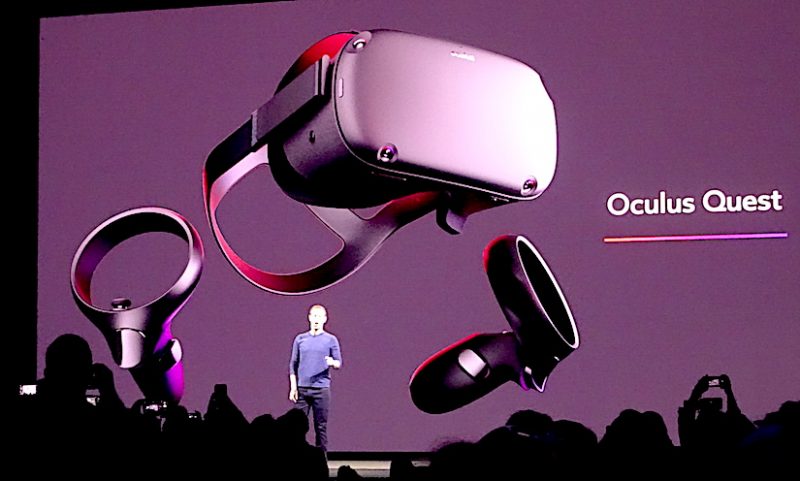 EMERGING TECH
EMERGING TECH
 EMERGING TECH
EMERGING TECH
 EMERGING TECH
EMERGING TECH
Facebook Inc. today fleshed out the final piece of its first-generation series of virtual reality headsets by announcing a new device called the Oculus Quest.
At Facebook’s Oculus Connect 5 conference in San Jose, California, Chief Executive Mark Zuckerberg (pictured) revealed the all-in-one headset, which has has a powerful processor, a lightweight form factor and the ability to track movement and gestures. It will ship in spring 2019 with a price tag of $399.
After introducing the headset, Zuckerberg said VR needs to solve two important problems before it can start to reach the 1 billion VR users he has set as a goal.
The first is building an ecosystem that is self-sustaining, where developers can afford to build high-quality experiences with enough users to pay for the content. The second is to build a headset product that has a form factor small and comfortable enough to wear at length, but also powerful enough to run whatever VR developers create.
Oculus will also direct its roadmap so that future generations of products will always be able to display content created for previous products. That means that certain key decisions on form factors and standards must be locked in now.
Zuckerberg commented that the key qualities of any VR system that gets to scale include the need to be standalone – that means no wires and “you can take it with you” – it must also support hands and gestures, and finally it must support six-degrees-of-freedom, meaning that users can walk around in that virtual environments.
The Oculus Quest fits nicely into all of these key features. The headset will feature an all-in-one VR experience coupled with wireless connectivity, hand presence detection and 6doF tracking that is capable of running Rift-quality experiences. It will also ship with Touch controllers to deliver the same hand presence as Rift.
That, along with the more attractive price, is likely to make the Quest a success, Anshel Sag, an analyst with Moor Insights & Strategy, told SiliconANGLE. Although he thinks $299 would be the real sweet spot, he said the addition of controllers in the price “sets you up for a complete solution out of the box.”
Sag also said the range of products is valuable for a couple of reasons. For one, “you give people ‘good, better and best,'” he noted. And for developers, software developed for the Rift can be ported to the Quest and potentially later to the Go.
At launch, Oculus Quest will have more than 50 titles immediately available including games, immersive storytelling movies and productivity tools.
For example, one experience launching with Quest is a VR tennis game that enables players to actually move around an area and experience a virtual court as well as serve and return balls. Other sports include baseball and boxing. And, for those more interested in a “The Matrix”-style movie experience, one demo included the need to dodge bullets (in a VR game called “Superhot“).
The Oculus Quest is also capable of pulling real-world objects into VR using its camera array. That means that while users wear the headset, they need not get totally separated from their physical space to work in VR. This idea is called “mixed reality” and it can be described as the inverse of augmented reality, which puts virtual objects into the real world.
During the demonstration of this technology, one important thing is that it allows workers to access their own physical keyboard and desk. The concept of mixed reality is still underdeveloped, but it opens up a lot of opportunities for productivity using VR in that workers can still change their office into a totally different place – by doing away with walls and ceilings or distracting hustle and bustle.
Mixed reality also provides the opportunity to turn anything into an interactive screen that can display information. A person wearing a headset is no longer constrained to just a monitor for information and anything in the field of view can become a place to put another 2-D screen or even 3-D manipulatable objects.
As for entertainment, the Oculus Quest is capable of delivering extremely immersive storytelling by taking over entire spaces. This capability can make both video game and cinematic experiences even more impressive by allowing viewers to step inside the world of a movie and walk around in it.
Of course, to keep people from bumping into things, Rift engineers also developed a capability called “Room Guardian” that is capable of mapping out a room to remember where the walls are and where furniture sits. The Oculus Quest has no wires to get tangled up in, since it would be a real bummer to trip over an ottoman or stub a toe on a wall when running away from Darth Vader.

The Oculus Quest incorporates the same optics as the Oculus Go, Facebook’s mobile-ready headset designed for low cost of entry to VR at $199, and comes with a display resolution of 1600-by-1440 per eye. It will also incorporate lens spacing adjustment to help maximize visual comfort.
The headset will also include improved built-in audio to provide even better immersive sound with even deeper bass response.
The full specifications for Oculus Quest have not yet been revealed, but more details are available at the Oculus blog.
Even Facebook, however, conceded that VR and AR are still years from becoming a mass market — at least six or seven years, in the estimation of Moor Insights’ Sag — but the lineup sets the stage.
“Ultimately for AR and VR to be successful, you need the groundwork” of established devices and experiences that are superior to those on personal computers and smartphones,” he said. “That’s what Oculus is doing here.”
With reporting from Robert Hof
Support our mission to keep content open and free by engaging with theCUBE community. Join theCUBE’s Alumni Trust Network, where technology leaders connect, share intelligence and create opportunities.
Founded by tech visionaries John Furrier and Dave Vellante, SiliconANGLE Media has built a dynamic ecosystem of industry-leading digital media brands that reach 15+ million elite tech professionals. Our new proprietary theCUBE AI Video Cloud is breaking ground in audience interaction, leveraging theCUBEai.com neural network to help technology companies make data-driven decisions and stay at the forefront of industry conversations.